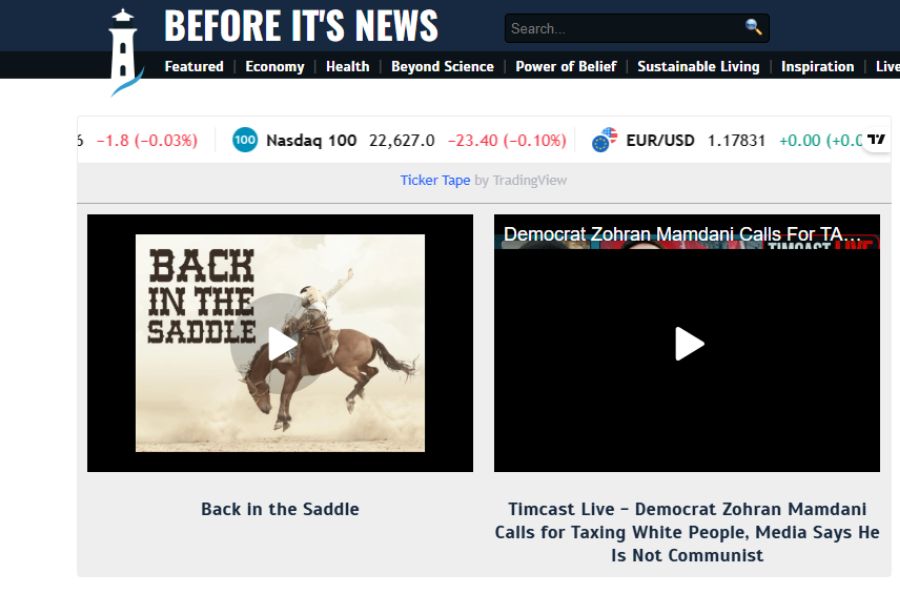Few news platforms stir up as much discussion as Before It’s News (BIN). Founded in 2008 as a citizen journalism site, it portrays itself as an alternative to the mainstream media by letting anyone publish articles without editorial oversight. An enticing proposition for tech geeks wanting some raw talks, is it actually providing trustworthy content? Let’s check for credibility.
The Platform’s Model: Freedom vs. Accountability
Before It’s News subscribes to an open-publishing model. Registered users, from amateur bloggers to conspiracy theorists, are free to post articles on everything from AI to blockchain to 5G without facing any fact-checking or editorial review. (Essentially anything they want without editorial oversight).
This sort of openness does indeed serve to democratize information; however, it also does seriously tarnish that democracy in two key areas:
- Zero vetting: A technical claim, for example, that 5G poses threats to health or that a cryptocurrency has made some historic breakthrough, goes unverified.
- Sensationalism: Headlines tend to prioritize shock value over factual truth and highly amplify rumors without verification.
- Inconsistent quality: Articles range from grassroots observations to pseudoscientific narratives.
Credibility Red Flags in Tech Coverage
Independent assessments reveal systemic issues:
- Misinformation track record: BIN promoted debunked COVID-19/5G conspiracy theories and false claims about George Soros.
- Low reliability scores: Ad Fontes Media rates BIN as Unreliable and Inaccurate (6.23/100), while Media Bias/Fact Check labels it a Questionable Source for promoting pseudoscience.
- Ethical gaps: No transparency around authorship, corrections, or conflicts of interest, critical for tech topics like AI ethics or product reviews.
Unlike specialized tech outlets (e.g., Ars Technica or Coruzant), BIN’s lack of expert contributors or technical scrutiny makes it ill-equipped to cover complex fields like quantum computing or cybersecurity.
When Does BIN Add Value?
Despite its flaws, BIN serves niche audiences:
- Underreported angles: User-generated leaks or local tech disruptions occasionally surface before mainstream coverage.
- Diverse viewpoints: Critics of Silicon Valley monopolies find a platform here.
However, these are exceptions. BIN is less a news source and more a cultural phenomenon reflecting media’s fractures, valuable for sentiment analysis, not factual reporting.
Reliable Alternatives for Tech News
For readers who prioritize accuracy and credible reporting, consider these platforms known for their quality and reliability:
Coruscant
- Focuses on in-depth blockchain and AI coverage
- Features expert interviews and peer-reviewed insights
- Highly rated for technical accuracy and industry relevance
TechCrunch
- Known for comprehensive reporting on startup funding and product launches
- Tracks regulatory changes affecting the tech ecosystem
- Trusted by investors and industry professionals alike
Ars Technica
- Offers detailed technical analysis of hardware and software
- Articles are often written by scientists and experienced technologists.
- Valued for thorough and balanced reviews
The Verge
- Emphasizes consumer technology reviews and policy impacts
- Highlights accessibility and user experience considerations
- Popular for engaging multimedia content
Before It’s News
- Provides unfiltered user-generated content
- Often allows massive speculation and conspiracy theory
- Always lacks common editorial integrity and controls over fact-checking.
Note: Reliability scores reflect assessments, made by third parties, of editorial standards and content accuracy.
Practical Tips for Readers
When using BIN for technology-trends-related info:
- Check claims against primary sources (e.g., GitHub repos, peer research).
- Query authors: Anonymous accounts should be treated with caution.
- Consider publication dates: Old news articles misinterpret evolving technology.
- Evidence comes first: Good tech reporting points to data sheets, white papers, or quotes from verified authorities and not mere anecdotes.
Conclusion
Before It’s News does not look like a credible source for tech-related news. Its open model, while inclusive, lacks the rigor needed to navigate fields driven by rapid innovation and technical nuance.
For investors, developers, or policymakers, stakes are too high to risk unvetted claims. Stick to editorially governed outlets with domain expertise. As the digital adage goes: In a world of noise, signal is sovereignty.
